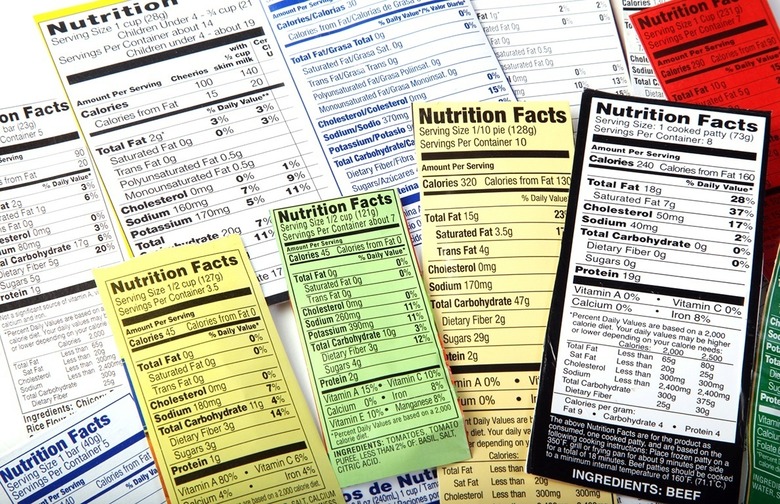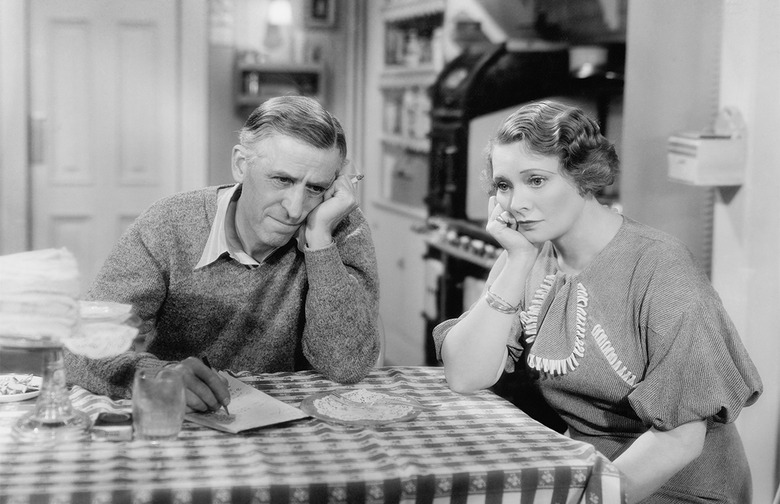The Most Popular Diets Of Every Decade Since 1900 Slideshow
In the current era of trendy cleanses and fad diets, "chewing" your way to weight loss would be unfashionable, but there's definitely a benefit to eating slowly and savoring your meals. In the early 1900's, Horace Fletcher, also known as "the Great Masticator," advised that food (even liquids) be chewed 100 times per minute before being swallowed in order to build strength in the jaw, slow down the eating pace, improve digestion, and turn "the pitiable glutton into an intelligent epicurean." Fletcher's theories were accepted by the elites of the day such as Upton Sinclair, Mark Twain, and John D. Rockefeller.
1910s: Counting Calories
In 1917, Los Angeles physician Lulu Peters introduced the world to a weight-loss revolution with her best-selling book, Diet and Health With Key to the Calories. At this point in time, the concept of a "calorie" was so new that the book even included a guide on the word's proper pronunciation. Peters presented caloric intake as a balance of energy, and discussed foods in terms of the calories they possessed: A slice of bread was now 100 calories of bread; a piece of pie was now 350 calories of pie.
1920s: The Cigarette Diet
The Roaring Twenties was a decade of excess, and that invincible, Great Gatsby mentality is represented by the diet advice of the day. In 1925 Lucky Strike capitalized on tobacco's appetite suppressant qualities when they introduced the "cigarette diet" with the tag line, "Reach for a Lucky instead of a sweet." The 1920s also saw the "Inuit diet" come and go, which suggested participants stick to a humble diet of caribou, raw fish, and whale blubber.
1930s: Grapefruits, Bananas, and Skim Milk
This decade was marred by a life-altering, global economic collapse, and the diet advice of the period was equally depressing. For the times when food was available, eating a grapefruit before every meal was believed to stimulate weight loss. Another fad diet of the 1930s was the bananas and skim milk diet, promoted predictably by the United Fruit Company (now called Chiquita Brands International) — the world's largest importer of bananas.
1940s: Wartime Rationing “Diet”
During the first half of the decade the United States (and most of the developed world) was entangled in a vicious war that would determine the future trajectory of humanity. Food choices didn't stem from a desire for weight loss, but rather from necessity. The wartime rationing effort limited the quantity of certain ingredients accessible to adult. One adult was allowed to have four ounces of ham, two ounces of butter, two ounces of cheese, eight ounces of sugar, and three pints of milk per week. People were encouraged to grow their own fruits and vegetables in backyard gardens, and had to go without some staple ingredients like flour, oatmeal, and fish. Diet by necessity is a powerful tool.
1950s: The Prayer Diet
Prayer relieves the soul of a heavy burden, but in the 1950s prayer was used as a way to relieve your waistline of the burden of extra pounds. In 1957, Reverend Charlie Shedd authored Pray Your Weight Away, after he himself lost 100 pounds. He condemned guts and shapely bodies, while touting the holiness of a slim physique by advocating counting calories along with sustained and humble prayer. The Christian diet trend continued to explode, with Shedd penning an equally successful sequel, The Fat is in Your Head, in 1972.
1960s: Weight Watchers
The same decade that gave Americans the Civil Rights Movement, the Vietnam War, and Jimi Hendrix also introduced the country to the most famous name in weight loss: Weight Watchers. In 1961, Jean Nidetch hosted friends in her New York City home to discuss weight loss strategies. Two years later, Nidetch was 72 pounds lighter, and ready to start a diet empire that would forever change the way people thought about weight loss. While Weight Watchers continues to be a force today (especially after Oprah Winfrey's endorsement and investment), the "Cabbage Soup Diet," which promised '60s dieters they would lose 17 pounds in a few weeks, hasn't retained nearly as much influence. The diet was an effective way to lose weight, but led to some serious bloating and gastrointestinal issues that just couldn't be overlooked.
1970s: Diet Pills and the “Sleeping Beauty” Diet
The '70s was the decade of pharmaceuticals. Diet pills were advertised as miracle weight-loss drugs because of their ability to suppress appetite. The primary ingredient in many diet pills of the decade was phenylpropanolamine (PPA), a type of amphetamine used to treat upper respiratory problem as well as obesity. But PPA came with some side effects, with the National Clearinghouse for Alcohol and Drug Information estimating 10,000 reports of phenylpropanolamine poisoning each year. In the year 2000, the U.S. Food and Drug Administration issued a public health advisory warning of the adverse effects of PPA, which include tremors, nausea, excess sweating, chest pains, and stroke, and began the process of removing PPA from all drug products. Equally crazy was the sedation diet, also known as the "Sleeping Beauty diet," in which participants would be sedated or force themselves to go to sleep whenever they felt hungry. More sleep was believed to lead to greater weight loss.
1980s: The Scarsdale Diet
The election of Ronald Reagan to the presidency marked the rise of American conservatism, and diet advice followed suit. Miracle weight loss solutions fell by the wayside, as a hard-line, disciplined approach to weight loss took over. The Scarsdale Diet, created by Dr. Herman Tarnower, advocated for a two-week high-protein, low-carb, and low-calorie diet. Participants would spend two weeks on the diet followed by two weeks off, and were instructed to consume fewer than 1,000 calories per day. Proponents found that they could lose 20 pounds per week, but this type of calorie deprivation is not a healthy way to achieve sustained weight loss, and Tarnover's recommendations most likely resulted in severe nutrient deficiencies.
1990s: The Atkin’s Diet
If you lived through the 1990s you'll know the decade was embodied by one diet and one diet alone — Atkins. Created by Dr. Robert Atkins in 1972, the diet — which relied on protein and red meat and eschewed almost all carbohydrates — reached peak popularity in the 1990s and early 2000s. The goal of a severely low-carb diet is to move the body into a state of ketosis, a process that forces the body to convert stored fat for energy rather than stored glucose. However, there is little conclusive evidence that a diet absent of carbohydrates is any more effective than a well-balanced diet that includes whole grains, fruits, vegetables, and other complex carbohydrates.
2000s (and Beyond): Paleo, Gluten-Free, and Baby Food
Diets post Y2K represent a general sense of confusion regarding nutrition and weight loss, and the public has shown a willingness to try just about anything, from a diet focused solely on Twinkies to one that's founded on eating only baby food. It's impossible to talk about contemporary diets without mentioning the growing fear of gluten that has birthed an industry dedicated to avoiding all things wheat; and the paleo diet, whose practitioners are convinced that eating like our Paleolithic ancestors is the key to good health and weight loss. With that being said, the scientific consensus is fairly consistent opinion, suggesting that a healthy diet should be balanced and founded in whole grains, lean meats, fish, fruits, and vegetables, and should avoid refined sugars and processed foods.










